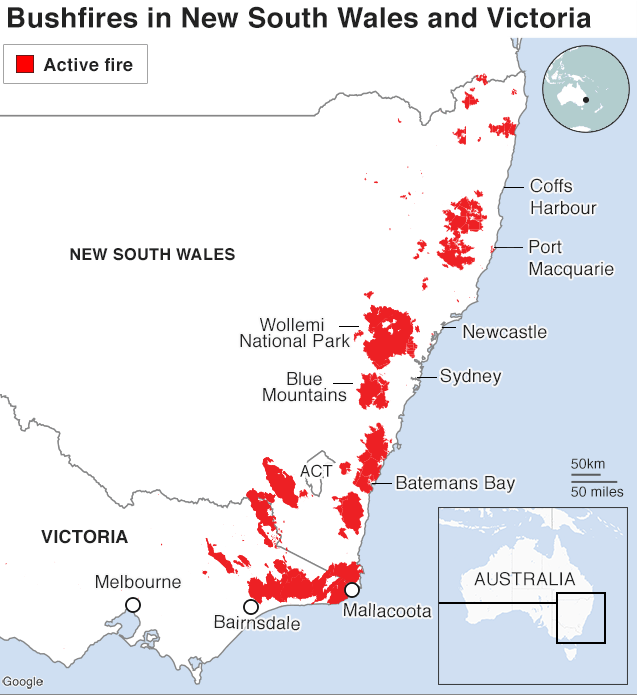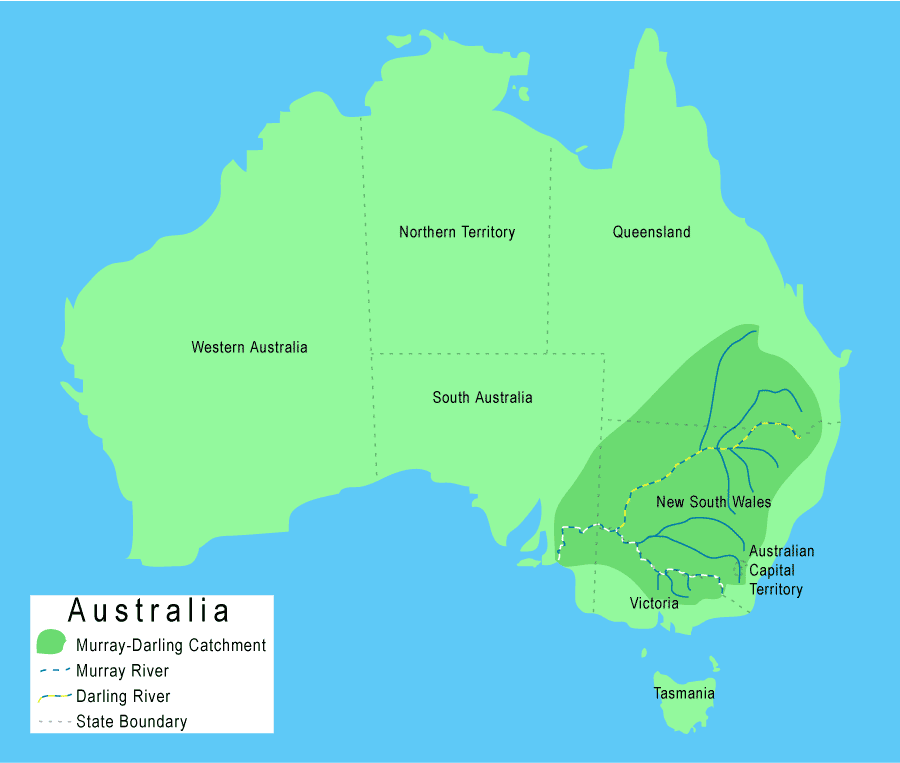Why in news?
Australia is witnessing an unprecedented catastrophic fire season that began in August 2019, with large-scale destruction, mainly in New South Wales (NSW) and Queensland.
- Fire is no stranger to the dry continent’s woodlands. (Click here to know more on bushfires in Australia)
- But, the fires this time has devastated over 10 million hectares of land, killing at least 25 people and tens of millions of animals.
- Besides this, it has forced the evacuation of entire communities.
- Kangaroos were burnt in their tracks as they tried to flee, and koalas desperately escaped the fire.

What is the government’s response?
- The government of Prime Minister Scott Morrison is struggling to pacify the angry citizens.
- Citizens are calling for a reconsideration of the country’s relationship with fossil fuels.
- The government has, however, sought to downplay the impact of changing climate.
What is the significance with the current fires?
- Bushfires are routine in Australia, but authorities are calling this season the worst on record.
- Australia is hot, dry, prone to droughts, and, in some parts of the country, to bushfires.
- Such fires happen when grass, branches, and trees start to burn in an uncontrolled manner.
- In New South Wales and Queensland, the risk of bushfires peaks during the spring and early summer.
- This year, the fires started in August 2019, much before the Southern Hemisphere summer (December to February).
- These have been aggravated by an impending drought and record high temperatures.
- This summer, Australia has witnessed its worst drought in more than 5 decades, and temperatures went above 41°C.
- Scientists have said that the conditions demonstrate the effects of climate change.
What is the impending threat?
- Warnings have been sounded by scientists that even with a global average temperature rise of 1°C, the raging fires have engulfed an area the size of Switzerland.
- The world is set to warm at least half a degree more in the coming decades.
- Given this, Australia’s encounters with devastating fires could become more frequent.
- It could happen perhaps even once in 8 years, making large parts of the continent uninhabitable.
- The situation is bound to worsen without policy change, as temperatures are predicted to soar to 50°C.
- Over the past half century, the number of hot days and very hot days each year has steadily increased.
- It would be tragic if this scientific insight is ignored.
What are the contributory factors?
- The coal industry has a sway over politics in Australia that is disproportionate to its share of economic production.
- One-third of global coal exports come from Australia, accounting for 7% of global carbon emissions.
- The country is the largest exporter of coal and liquefied natural gas in the world.
- The energy sector is an important employer there.
- Prime Minister Morrison’s conservative government has defended the country’s coal industry despite criticisms.
- Australia has also invited scorn for counting carbon credits under the Kyoto Protocol instead of making new reductions to meet its emissions targets.
- The mining industry has caused worries about greenhouse gas emissions increasing in Australia, and in countries to which it exports the fuel.
- The official Climate Commission too was shut down by the government 6 years ago.
- Credentialed specialists at the country’s Climate Council have thus had to crowd-source funds to continue their work.
- Today, they are raising the alarm over the lowest ever rainfall recorded in parts of NSW and Queensland.
- These and high peak temperatures are producing challenging situations across the large Murray-Darling Basin.

What does this call for?
- Given the current fire season, a wise choice would be to move to a greener future that strengthens an already diverse economy through innovation.
- Long-term prosperity for Australians and a future for its animals can be secured only through policies that foster environmental protection.
Source: The Hindu, Indian Express
